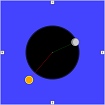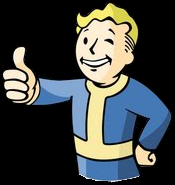Marsgate Industries
The art of Emo Mosley.
|
Artist Statement |
Projects |
||||||||
|
There has always been a synergistic relationship between Art and Science. Science enhances Art through the implementation of technologies: improved pigments for painting, sturdy and lightweight materials for sculptures, and couture that lights up the night. Instruments produce imagery from the tiniest molecules to the vastness of space. These become Art themselves, and inspire artists to paint, sculpt, and interpret many aspects of Science. This, in turn inspires the imaginations of future scientists who ask: What If? I have seen the beauty of the inner machinations of atoms, the repeating patterns of crystalline structures, and the magnetic threads of a solar mass ejection. Beauty exists in the self-organized patterns of movement in a flock of starlings, created by simple rules that emerge as mesmerizing murmurations. Science can be expressed through Art, and Art can be expressed through Science. I am inspired to demonstrate these expressions through my artistic endeavors. I wish communicate my awe of Science and its beauty through my projects. 
Welcome to my site. I hope it will open your imagination and inspire you to make and create. My name is Emo Mosley. I have always had a fascination with how things work. Growing up, I would often disassemble my toys to try to figure them out, looking for the deep magick that ran the machine; I wanted to understand technology. I gained a healthy appreciation for and wonder of science. During my years pursuing a degree in Computer Engineering, I made friends with many of the local artists in Fayetteville, Arkansas; I became a patron of their works. I fell in love with my college town, known for its excellent, diverse art community and decided to stay here after receiving my degree. Throughout my career in Information Technology, I yearned to create and explore using my knowledge and apply it to art. In my spare time, I toyed with music, electronic jewelry, and participated with art galleries. After leaving my IT career behind, I decided to focus on creating scientific-themed art projects.
I am always open to collaboration with other artists. Whether you have an interest in my works or simply wish to comment, you can email me at: 
This project is a small part of a much larger one that I hope to complete. Years ago, I became fascinated with nixie tube clocks and had decided to build one of my own. I came close to completing a prototype, sans tubes, when life happened. The nixie tubes were abandoned in exchange for a different flavor of clock: the Sun and Moon. What better way to definitively express time than the positions of the solar orbs? I'm not talking about an orrery of all the planets but something simpler. If one knows the longitude and latitude of their position on Earth along with the date and time, the positions of the Sol and Luna can be calculated, and thus be displayed as movements in a clock. Its physical manifestation is imagined as a retro-futuristic concept steeped in the Victorian Era of machinations. Before I can build such a device, though, I must be able to calculate the positions. That's what this project represents. The mathematics necessary to pull this off are quite complicated to learn, and I sometimes lack the tenacity to teach myself new tricks. What I found in my searching was a nifty spreadsheet containing Sun position calculations on a NASA web site. Elsewhere, I found the mathematics for the Moon position and phase. With these together, I have solved the mathematics portion that are now demonstrated in this project. I come across and read many science articles. Of particular interest are all things astronomical. Scientists are discovering new things about the Universe every day. When I see an article about a peculiar star or exoplanet orbiting one, I will often look up that star's designation to find out more. A particularly useful site, Astronomy Nexus, kept appearing in my search results, so I poked around some more. What I eventually found delighted me, the HYG Database. The site made available the combined data for three separate star catalogs in spreadsheet form, 120,000 rows of celestial objects! The data are extensive, including spectrum, position in the night sky, and most excitingly, the estimated 3D coordinates of many stars. I had to ask myself: What if I made use of this raw data and displayed it on the screen for me to browse? What would stars' appearances be to the naked eye in space? There are limits to what a web browser can handle, but it can handle a lot. I curated several subsets of stars that interested me. Some are stars near Earth, some near a black hole, and some are clustered in interesting patterns that I found. Navigating through them is mesmerizing, and the best facet of all: they are factual and concrete objects out there in space. I am an avid computer gamer, and I love creating simulations to see the laws of physics emerge from computer code. I had thought of an idea for a neat game, but instead of relying on existing game engines or code libraries, I wanted to understand and create my own 2D physics framework. This led me down a path to understand elastic collisions. I read several articles on creating your own 2D physics engine and decided to dig in and learn the mathematics behind it. Strangely, I found out that many articles explaining this math made a basic error involving subtracting two vectors. This error seemed to appear in every article and site that touched on the subject, yet in the end, it did not affect the functionality of the engines. When I implemented the math, the objects (in my case, simple spheres) behaved as expected. I was exhilarated when I first saw the spheres react. What a beautiful dance to the laws of physics! Despite this, when the spheres came to rest, they failed to stay that way. They began to act erratically, defying the bounds I had created for them. I could never make them settle, so I abandoned further attempts at making a game from the chaos. 
One of my all-time favorite video game franchises are the Fallout series by Bethesda Game Studios and Obsidian Entertainment. I had perhaps clocked over 2,000 hours in Fallout 3, but years later when the sequel, Fallout 4, was imminently pending, I decided to celebrate by throwing a Fallout-themed Halloween party. I used the mechanics of the game to roughly design the rules for a live-action RPG cosplay event. I invited many friends who are also fans of the franchise to attend. Guests were evaluated for their costumes, awarding bonuses to their characters. Each attendee was provided with a Velcro strip to contain their attributes and modifiers, printed from thick card stock. Quests were handed out by myself, which was a mistake in the end, because I quickly became overwhelmed trying to run the quests and be host to the party. Despite this, I considered the party an overwhelming success, and each guest seemed to get what they wanted from it. The rules and media files used to create this event are available for download so that you can host your own themed RPG/cosplay party. |
|